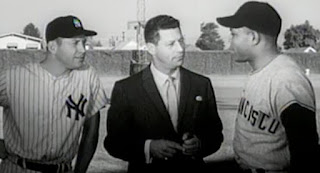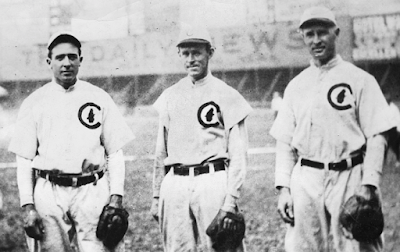Unexpected Passing of Gil Hodges
The New York Mets were in the middle of Spring Training and staying at the Ramada Inn across the street from the Palm Beach Lakes Golf club. After finishing their golf game, the group chatted with former pitcher Jack Sanford who was working at the course. They walked back to the hotel and as they were separating Pignatano yelled across the parking lot to ask him what time to meet for dinner. Hodges replied and as he turned back to his room he collapsed. He was quickly rushed to Good Samaritan Hospital where Doctor James Smith diagnosed the situation to be a heart attack. Smith inserted a tube in Hodges throat and needle in his heart in an effort to revive him, but after 20 minutes of failed attempts he was pronounced dead at 5:45 two days short of his 48th birthday.
The baseball world was shocked by the unexpected death of such a young man from a heart attack, which at the time was thought to be an old mans inflection. Los Angeles Dodgers owner Walter O’Malley described Hodges as “a breed of ballplayers who, I guess, will pass out one by one.” When Pee Wee Reese and Casey Stengel head about Hodges passing they both made comments almost in disbelief and mentioned that they had just recently talked to him. There was one member of that 1950s Dodgers Boy’s of Summer group who was not immediately told about Hodges, that was Roy Campanella. Campy was in in the hospital after suffering from a blood clot in his lungs and doctors decided to hold off on telling him about Hodges. Bowie Kuhn called Hodges “a thorough champion – as a player, as a manager and as a friend to us in baseball.” And went on to say “His unique decency and class inspired us all and I thank god they will continue to do so in our memories of him.”
It was not his first heart attack, near the end of the 1968 season the Mets were playing in Philadelphia against the Phillies when Hodges started to get an uncomfortable feeling. The team then traveled to Atlanta for a two-game series against the Braves. It was during the second inning of the first game on September 24 that Hodges left the dugout to go lay down in the clubhouse. He did not know it until the next day, but he had suffered a mild heart attack. Rube Walker would take over as the Mets manager for the remaining four games of the season. He stayed in the Atlanta hospital for 26 days and then at a local hotel for a few more days. Hodges’ Doctors instructed him to stop smoking, not to climb any stairs and to lose 20 to 25 pounds. He followed those rules for a time by relaxing in his St. Petersburg, Florida beach home during the offseason. Before not too long he would be back to smoking his two packs of cigarettes a day. There was still some concern about if he was going to be strong enough to manage the team in 1969. He did receive some encouragement from Birdie Tebbetts and Danny Murtaugh who had returned to managing after their own heart attacks.
The following day after his collapse at the hotel, arrangements were made to fly his body back to New York. The New York Yankees who were training in Fort Lauderdale, Florida had a plane going back and had agreed to stop in Palm Springs to pick up Hodges and some other Mets officials and players. One of the Yankees’ players that was part of the trip was Ron Swoboda. Swoboda had been a long time Mets legend and a key member of the 1969 Amazin’ Mets that won the World Series with Hodges as manager. In 1970 he had been critical of Hodges’ management style and how much playing time he was given. Hodges responded by saying that Swoboda had “been here longer than I have and he just never got any better” which is why he was had become a backup. However, when the plane landed, Swoboda was the only member of the Yankees who deplaned and watched as the casket was loaded. Mets player Jerry Koosman and coaches Pignatano, Walker, and Yost were also on the flight. On the way into New York, the plane flew low over Shea Stadium as if in a tribute to the man who helped win the World Series for the team only three years before.
On April 5th, two days after his passing there was a viewing at Lady Help of Christians Church where approximately 36,000 people came to pay their respect. The next day a private service was held with such people as Pee Wee Reese, Carl Furillo, Sandy Koufax, Jackie Robinson, Tom Seaver, and Joe Cronin in attendance. Bishop Francis J. Mugavero presided over the ceremonies. Following the funeral, he was laid to rest at Holy Cross Cemetery.
The player strike was still ongoing, but it was bound to end at some point, and the Mets wanted to make sure that they had a manager in place before that happened. Many names were brought up to succeed Hodges including some of his former coaches, Yost, and Pignatano, also Whitey Herzog, and Hank Bauer. However, the two leading candidates were Rube Walker and Yogi Berra. Team General Manager Bob Scheffing and team owner Joan Payson ultimately decided to go with Yogi Berra.
The Mets dedicated the 1972 season to Hodges and would finish in third place in the National League East Division behind the Pittsburgh Pirates and Chicago Cubs with an 83-73 record. The following season on June 9th before a game against the Los Angeles Dodgers the Mets would retire his number 14 jersey.
 |
| Gil Hodges' Death Certificate |





Comments
Post a Comment